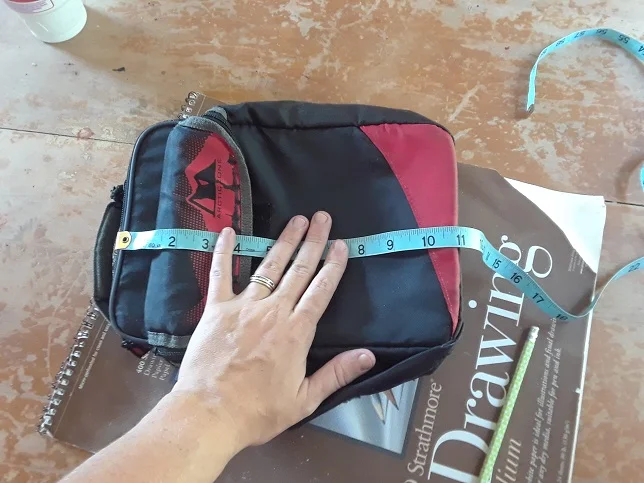Drafting a Pattern
Turning 2-D Shapes Into 3-D Objects
It’s now August, and I feel like the whole Back-to-School thing snuck up on me. Again. Even though this year I was ready for it. We have as many supplies as we could keep from last year, I made lots of new clothes over the spring and summer, and we purchased most of the new books and pencils that we need. I even decided that in an effort to save money I would sew lunchboxes this year (because last years lunchboxes all ripped). Maybe a little ambitious, but a friend had just cleaned out her sewing room and gave me all of her leftover fabric, so I had stuff to play with.
If you’re drafting your pattern from an existing object it’s good to have that with you to create your pattern base from. I’m using one of last year’s lunchboxes. You’ll need a measuring tape, paper and pencil, and the high school math that you didn’t think you’d ever need again (only a little right now).
Start by measuring the length and width of your object.
This lunchbox is approx. 11x7 inches. It’s maybe 2” deep with a zippered pocket on the front.
Using your measurements draw the shape of your object on the paper. I am using the same piece for both the front and the back, and since the back piece will fold over the front it needs to be 3” taller than the front.
If you just sew the front and back pieces together you will have a very flat object, so measure around the sides and bottom of the front piece to get the length of the middle piece (the width depends on how deep you want it).
Write all of your measurements and cutting instructions on your pattern and cut it out. Remember to include your seam allowance, and how many pieces of each you will need out of which fabrics. For this lunchbox I need an outer fabric, interfacing, and lining. Since the middle piece and the handle are just rectangles I don’t need a pattern piece for them, just measurements. At this point I should have gone all perfectionist and made sure everything was even and straight—I didn’t and it caused me some problems when I was sewing. I had to do a lot of trimming.
The first time or two that you make your new pattern will be your test runs, what is most often called a muslin. Do make it from the fabrics that you plan on using for your finished piece, that way you can see how the fabric folds and fits in the final project. If you use a cheaper or different weight fabric your end product will not fit the pattern right and when you make it with your intended fabric you will have problems.
Next time I’ll give you the sewing tutorial for this lunchbox (I still need to upload the final pictures).












